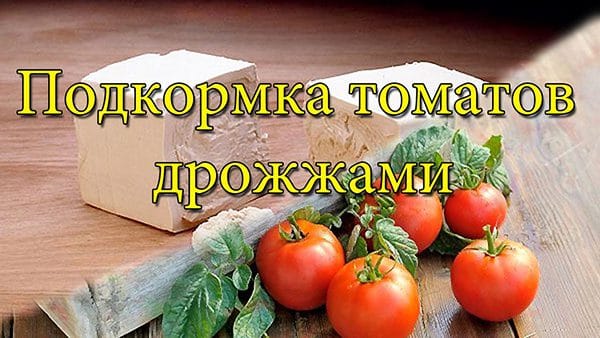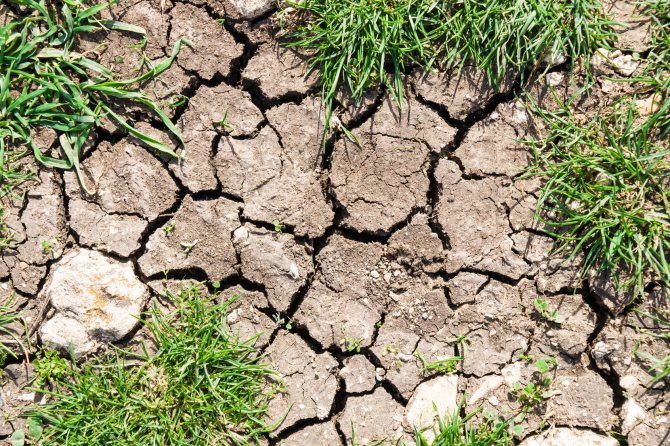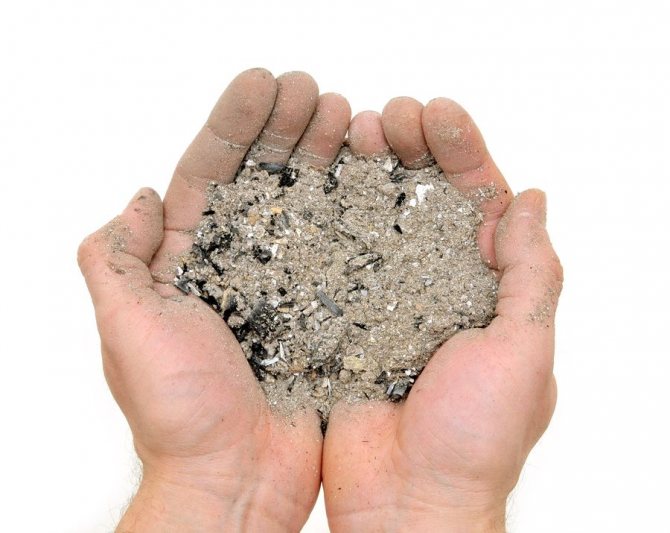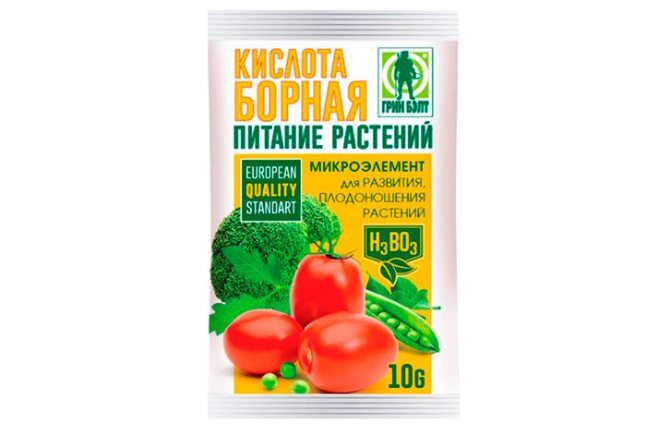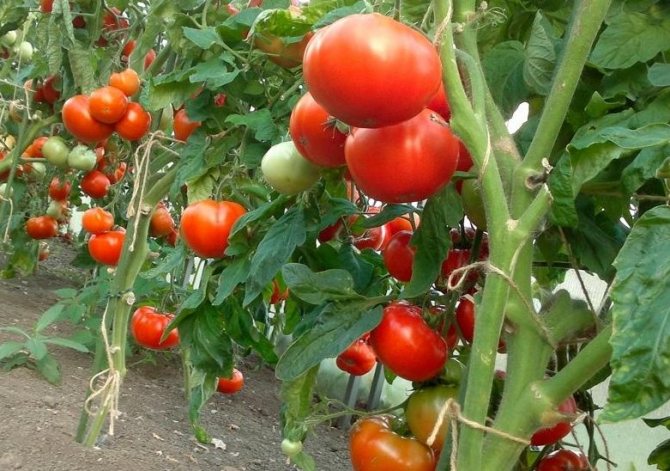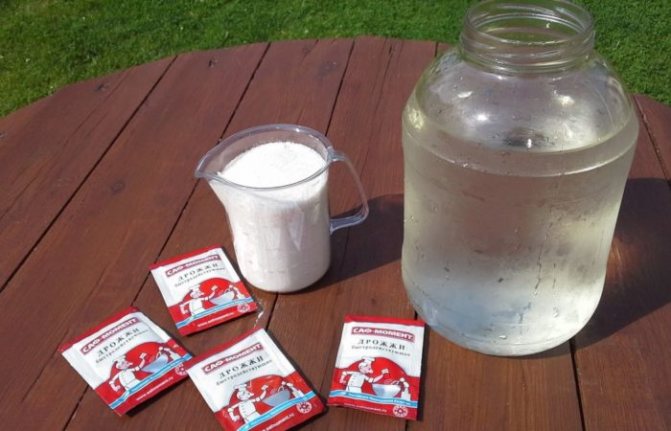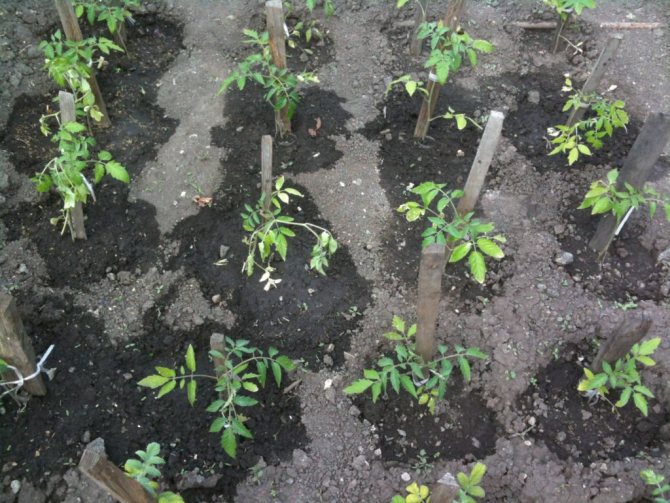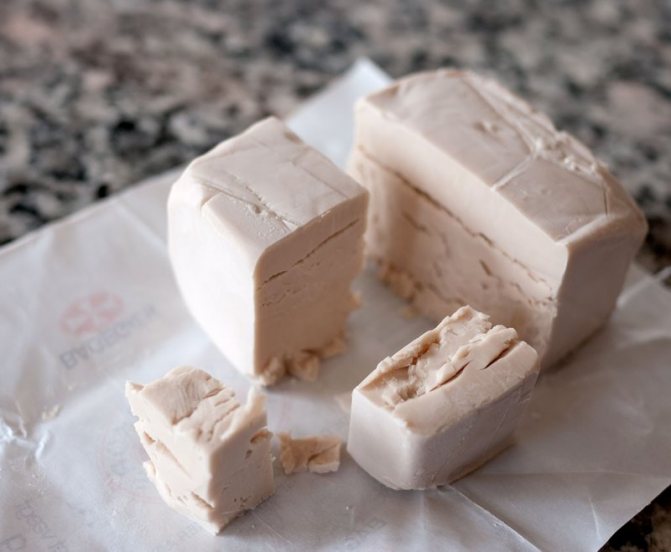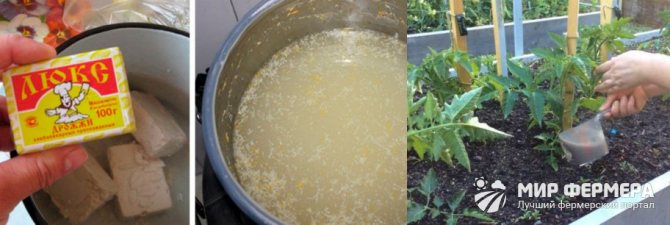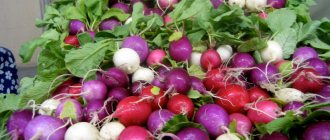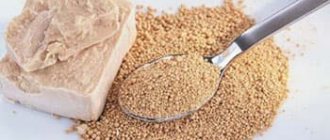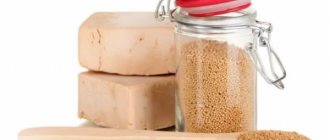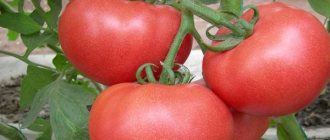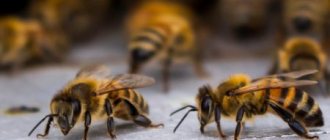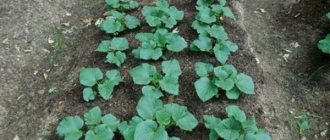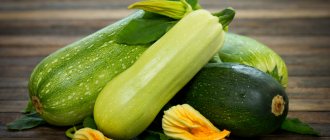Fertilizing vegetables and flowers with yeast dressings is not new. Even at the time of the lack of mineral fertilizers, vegetable growers noticed the beneficial effect of yeast on the growth and productivity of various crops.
The seedlings quickly adapt after transplanting, have a strong root system and a well-developed bush. Already on the second - third day after feeding, the bush noticeably changes for the better: the color is rich - green, the leaves are smooth and shiny. Subsequently, active flowering and fruit setting is noted.

How to use tomato yeast
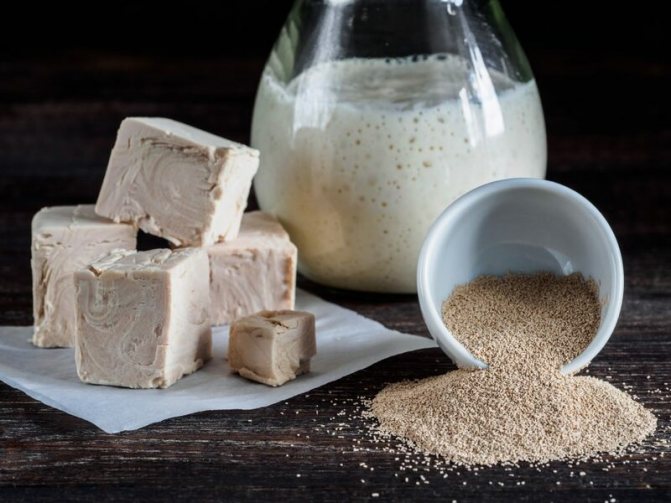

Yeast
They began to use the most common yeast as fertilizer back in Soviet times, when there was no such variety of feedings on the market. The use of yeast provides the plant with a sufficient amount of useful and nutritious microelements, has a beneficial effect on the immune system.
Beneficial features
A yeast-based fertilizer has a beneficial effect on plants of any age. Its effect on young seedlings is most noticeable. Yeast:
- accelerate growth;
- increase immunity;
- promote lush flowering;
- increase productivity.
Also, such fertilization allows seedlings to quickly take root in a new place after picking and planting in open ground or a greenhouse.
INTERESTING. In its effect on young seedlings, yeast can be compared with complex mineral fertilizers.
In addition to plants, yeast fertilization has a beneficial effect on the soil. There is a stimulation of microorganisms in the soil, the processes of mineralization and the formation of useful carbon dioxide are enhanced.
BTW. Another important advantage of yeast fertilizer is its low cost.
disadvantages
The main disadvantage of such solutions is that the beneficial effect of them is manifested only in warm weather. That is, fertilizers can be applied from late spring to late summer.
In addition, yeast feeding is completely useless during cold snaps. It just won't start working.
You should not use yeast as fertilizer more than 3 times, as it absorbs a lot of potassium from the soil during fermentation. Therefore, the frequent use of yeast feeding can lead to a deficiency of this element.
Recommendations for the introduction of yeast dressings
In order for the benefits of yeast dressings for tomatoes to be obvious, you need to follow some of the recommendations of experienced gardeners (Figure 8).
The growth of the bushes will be vigorous and the harvest will be plentiful if you consider the following:
- Root watering is carried out only on moderately moist soil. In too wet soil, yeast can provoke the development of fungal diseases and you will have to spend time on their treatment, and in dry soil the beneficial properties of the substance simply will not be revealed.
- Watering is recommended in the morning or in the evening so that moisture does not evaporate, but penetrates deep into the soil.
- In the process of life, yeast consume a lot of calcium, therefore, wood ash is necessarily introduced into the soil along with it.
- The solution for irrigation must be fresh, as it loses its useful properties during storage.


Figure 8. Apply the solution to wet, but not too wet soil
In addition, it is not recommended to exceed the dosage or frequency of watering, as this can lead to the opposite effect and depletion of the soil.
Yeast as fertilizer for tomatoes


Yeast Fertilizer Concentrate
The greatest effect of yeast-based fertilizers is achieved with complex use in the form of root and foliar feeding. The result from the application is usually noticeable after a few days. Especially on young seedlings. Tomatoes grow up and look noticeably firmer.
When feeding adult plants, an acceleration of the formation of ovaries is observed, the fruits are poured and ripen faster.
This effect is achieved for the following reasons:
- yeast contains many trace elements, proteins, vitamins and amino acids;
- yeast is essentially a fungus that promotes the processing of organic matter and the formation of substances beneficial to plants.
REFERENCE. To enhance the effect, experienced gardeners are advised to pre-fertilize with organic fertilizers. In this case, 10-14 days should pass between the introduction of organic matter and the addition of yeast.
How Supplements Work
Getting into the soil, yeast microorganisms "eat" organic matter - starch, sugar. At the same time, carbon dioxide is released, which feeds the plant roots.
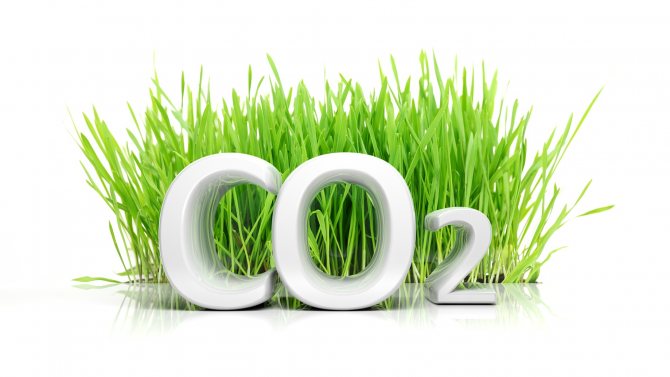

Microorganisms can work with or without access to air, therefore, when they enter the ground, they gradually expand the boundaries of their activity, contributing to aeration of the soil and increasing the access of oxygen to deeper layers.
The rate of reproduction of microorganisms depends on:
- from the presence of food - sugar or starch, therefore, feeding a tomato with a yeast solution occurs with the addition of sugar;
- from the temperature of the soil and air - in a warm season, the growth rate increases;
- from the amount of waste products of the yeast microflora in the soil - carbon dioxide. Therefore, the more intensively the plants consume carbon dioxide, the better it is produced.
Every yeast cell divisible up to 25 times, that is, it produces its own kind Lives such a microorganism up to 7 o'clock... During this time, it manages to process organics several times its own weight.
Feeding tomatoes with yeast have their pros and cons. Cons is a relative concept.
Popular recipes and how to prepare solutions
To enhance the action of yeast, complex fertilizers are prepared on their basis. Below are recipes for the most popular and effective solutions.
With ash
Most often yeast is mixed with ash, which is the source of potassium. The effect of using such a solution is to increase the yield and increase the palatability of the fruit.
Recipe:
- Mix 10 liters of water, 10 g of dry yeast, 0.5 liters of ash, 3 tablespoons of sugar.
- Insist warm for 3 hours.
- Dilute the concentrate in a ratio of 1 to 10 with warm water.
With sugar
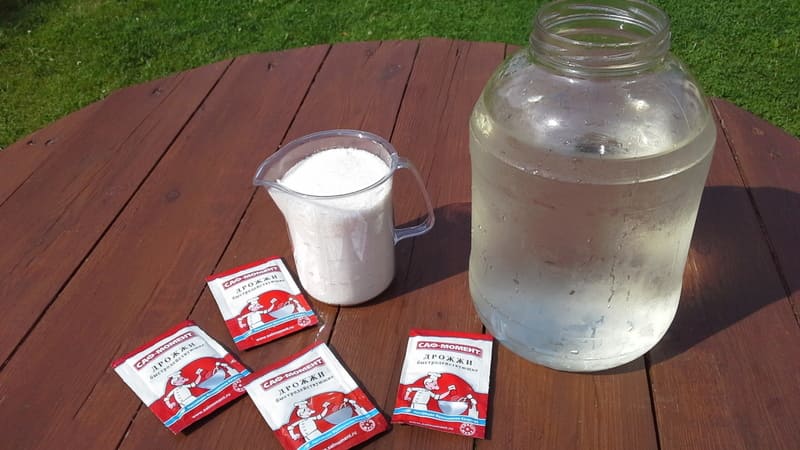

Fertilizer from yeast with sugar
Sugar is a source of glucose, and therefore energy for the growth of tomatoes.
Recipe:
- Mix 10 liters of water, 10 g of yeast, 2 tablespoons of sugar.
- Insist warm for 3 hours.
- Dilute the concentrate in a 1 to 5 ratio with warm water.
With nettles
Recipe:
- Mix 1 bucket of finely chopped nettle, 0.5 kg of crackers, 0.5 kg of yeast, 70 liters of water.
- Insist for 2 days.
- Water at the root.
With milk or whey
Recipe:
- Mix 0.2 kg of yeast, 1 liter of milk (whey).
- Insist warm for 3 hours.
- Dilute the concentrate in a ratio of 1 to 10 with warm water.
With hops
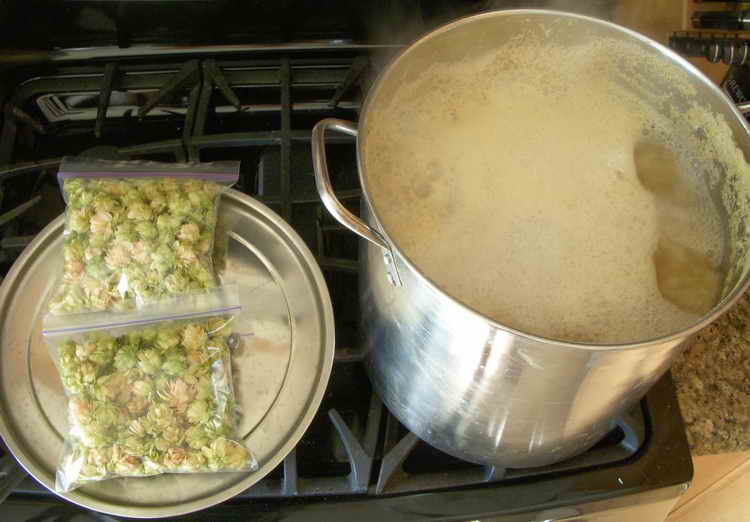

Making yeast fertilizer with hops
Recipe:
- Pour 1.5 liters of boiling water over 1 cup of hop cones.
- Cook for 1 hour over low heat.
- Cool and strain the broth.
- Mix the broth with 2 tablespoons of sugar and 2 tablespoons of wheat flour.
- Insist warm for 2 days.
- Grate 2 potatoes and add to the infusion.
- Insist warm for 1 day.
- Dilute the concentrate in a ratio of 0.2 l to 10 l of water.
With chicken droppings
Chicken manure is a source of phosphorus, one of the main nutrients in the plant diet.
Recipe:
- Mix 0.5 kg of manure, 0.5 kg of ash, 0.01 kg of yeast, 5 tablespoons of sugar, 10 liters of water.
- Dilute the solution in a ratio of 1 to 10 with warm water.
Yeast-Free Tomato Feeding Recipes


The composition of such dressings may vary. Here are only proven mixtures that use natural products to the maximum extent:
Composition No. 3
20 liters of water per liter of poultry (chicken) manure infusion. The consumption rate of this mixture, as well as mixtures No. 2 and No. 3, is one and a half liters for each seedling.
Composition No. 4
Now read:
- Feeding cucumbers with yeast for a good harvest
- Feeding strawberries with yeast - recommendations for the whole season
- Feeding tomatoes with iodine - two points of view on ...
- How to feed the seedlings of cucumbers so that they are ...
- How to feed gladioli for abundant flowering
One liter of bird droppings infusion plus 16 teaspoons of superphosphate (or monophosphate) plus 8 teaspoons of potassium sulfate per 20 liters of water. Due to the very slow dissolution of superphosphate in water, this composition cannot be prepared quickly.
Composition No. 5
One liter of bird droppings infusion plus 8 teaspoons of potassium sulfate plus 14 grams of boric acid per 20 liters of water. The presence of boron in the composition has a very good effect on the formation of fruits from the flower ovary.
Composition No. 6
100 grams of wood ash, infused for at least 5 hours in 10 liters of water.
Composition No. 7
Herbal infusion (like compost) is prepared by chopping grass (nettle and other weeds are also suitable), pouring it with water and keeping it in this state.
It is good to add a little bit of rotten hay to the green mass, previously filled with hot water and then cooled. This will cause the development of hay bacillus, which will inhibit the vital activity of pathogenic bacteria and pathogenic fungi.
Composition No. 8
One teaspoon of whole, unsterilized milk per liter of water. After spraying with this mixture, tomato leaves are covered with a thin fatty film and are better protected from diseases.
Composition No. 9
One liter of whey plus 20 drops of iodine per 10 liters of water. This composition disinfects the soil well, reduces the risk of late blight and improves fruiting. Consumption rate - 1 liter for each plant bush.
Taking into account the peculiarities of yeast and yeast-free dressings, you can roughly outline a plan for their introduction.
How to prepare a feeding solution
Fertilizer preparation is not too difficult. But you need to adhere to a few basic rules.
- The yeast must be mixed with warm water to activate its action.
- Fertilizer concentrate must be kept warm so that it begins to ferment.
- The prepared solution most often needs to be filtered before use. Especially in the form of foliar feeding.
- Yeast fertilizer only works in warm weather.
- Top dressing is not stored for a long time and loses its useful properties over time.
- Yeast feeding works best with other ingredients (ash, chicken droppings, sugar, etc.).
- Fertilizers are best applied to wet soil.
The positive effect of feeding tomatoes
The use of yeast as a top dressing, of course, will not provide the plant with a full range of necessary nutrients, but a certain positive effect will give:
- Strengthens the plant's own immunity.
- Strengthens the growth of the vegetative part and the root system.
- Improves air exchange and soil composition.
- Delays the development of some pathogenic microorganisms.


Precautions
Like any fertilizer, yeast feeding can bring not only benefits, but also harm if the norms and proportions are not observed, especially when combined with other ingredients.
Caution! Even diluted yeast starter can cause minor burns, especially in hot, sunny weather. Through damaged areas, plants are infected with pathogens of various diseases.
Dosage and stages of feeding in the open field
Feeding tomatoes with yeast
Water the tomatoes with yeast fertilizer at the rate of 1 liter per 1 plant. For large bushes, you can increase the volume up to 2 liters. In this case, it is very important to observe the proportions during the preparation of the solution.
There should be 3 total yeast dressings.
First stage
10-15 days after planting tomatoes in the ground. At this time, we help the tomatoes to better settle in a new place and stimulate the growth of stems and the development of leaves.
Second phase
15-20 days after the first feeding. Tomatoes have already grown, and with yeast feeding we stimulate flowering and fruit setting.
Stage three
When the first ovaries appear on plants. The purpose of this top dressing is to give the tomatoes extra energy to produce fruit. In addition, yeast has a positive effect on the taste of tomatoes.
Benefits of using yeast for seedlings and tomatoes
The use of yeast feeding allows not only to save money, but also to shorten the growth period, to help accelerate more generous flowering and fruit ripening. All this together leads to an earlier harvest from the home garden.
Tomatoes taken from a bush in a greenhouse are fed with yeast, not nettles, very tasty and aromatic, because fertilization using yeast affects the sweetness of the tomato. The fruits grow fleshy and juicy.
If you additionally feed the tomatoes with yeast, then the fruitfulness will remain until the onset of cold, which allows you to get fresh tomatoes for as long as possible. That's why you should use the recipes discussed above.
Yeast is a valuable raw material for fertilizing tomatoes that does not contain artificial chemical additives and is affordable for every gardener. It's not for nothing that they say that after feeding tomatoes grow by leaps and bounds. Now you know what kind of yeast you need to buy for tomato seedlings and how to properly fertilize tomatoes with yeast.
How to do foliar feeding?
Foliar dressing involves spraying tomato leaves. Usually, this method is resorted to when urgent fertilization is required. The solution is quickly absorbed by the leaves and acts immediately.


Foliar feeding with yeast
Foliar feeding is carried out according to the following rules:
- The concentrate must be further diluted twice more in the same proportions.
- Spraying should not be carried out in sunny and hot weather.
- In greenhouses and greenhouses, spraying is carried out in the morning.
Features of feeding seedlings
Tomato seedlings are fed with a yeast solution after picking. Fertilizer will allow plants to better transfer the transplanting process and take root in a new place. In addition, in this way we stimulate root formation.
No other elements are usually added to the seedling yeast feed. Watering is done at the root.
For foliar feeding, the solution is filtered and additionally diluted with water.
IMPORTANT! To feed the seedlings, yeast does not need to be allowed to ferment. That is, you simply mix them with water and immediately process the tomato seedlings.
When to apply top dressing
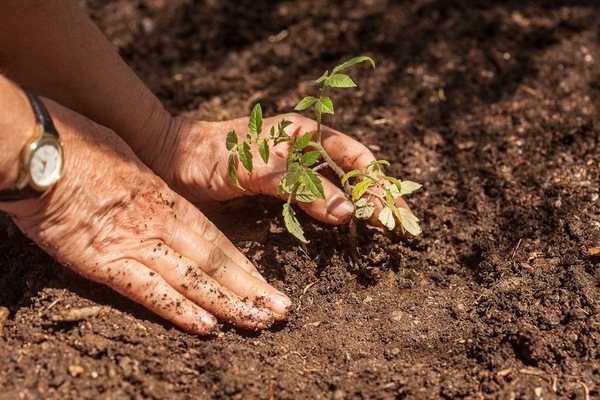

Top dressing for tomatoes grown in a greenhouse can be introduced at any stage of their development. Even if you add yeast feeding 1 time, then for 2 months the plant will develop without much hassle and problems. Therefore, yeast feeding can be applied 3 times per season. This will be enough for the tomatoes to grow and develop correctly. Fertilizing tomatoes after planting in the greenhouse with yeast is carried out immediately.This will not only go to the root system, but also help the seedlings better adapt to new conditions. But you should not apply dressings too often or in large quantities. This will only harm the tomatoes.
How to feed tomatoes with yeast in a greenhouse
Fertilization for tomatoes growing in a greenhouse follows the same pattern as in open ground.
The first feeding is carried out 10-15 days after planting the seedlings. The second - after another 15-20 days. The last feeding is carried out when the first ovaries appear on the plants.
IMPORTANT! Foliar feeding of tomatoes in a greenhouse is best done in the morning. This is necessary so that the leaves of the tomatoes have time to dry in a day. The temperature drops at night, and moisture on the leaves can provoke a fungal disease.
Novelties in yeast plant nutrition
Scientists are constantly looking for new ways to support plants during the growth and fruiting stage. One of these new ways is black yeast. They were found in the Urals in the microflora of Lake Baikal.
They are also called arctic. They have unique properties to resist solar radiation, since there is an ozone hole in Antarctica and ultraviolet light penetrates unhindered, affecting negatively all living things. But black yeast organisms have learned to resist this process and survived.
Fact! Black molds are sometimes found on the inside of kitchen dishwashers. Are not displayed in any way
So far, the drugs are in the testing stage and have an impact on human health. It is difficult to buy a scarce product, but according to reviews already available on the Internet and on the forums, we can say that the drug is powerful.
According to biologists working with black microorganisms, they have the following effects on plants:
- nitrates are removed from fruit crops;
- contribute to the rejuvenation of domestic plants;
- enhance the growth of the root system;
- suitable for most types of vegetable crops.
Black yeast is used in the same way as regular yeast - carried out two dressings: for seedlings during growth and before flowering outdoors. On sale occasionally come across concentrates of black yeast for soil fertilization.
Caution! For people with lung diseases, black yeast is dangerous. It is not yet known how microorganisms will behave with healthy people, but their plants have already been evaluated and grow "by leaps and bounds"
Fertilizers containing yeast
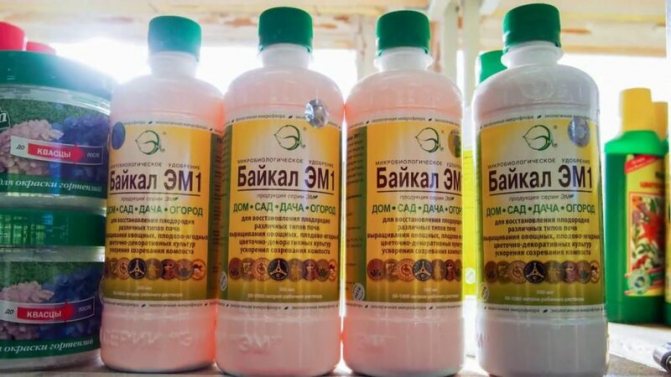

Fertilizers containing yeast
The effectiveness of yeast fertilizers has not gone unnoticed by the agrochemical industry.
The same principle as yeast works EM drugs... These are special formulations with microorganisms, the action of which is aimed at improving nitrogen fixation, preventing plant diseases, increasing the productivity and taste of fruits.
The most popular fertilizer in this group is "Baikal EM"... It can now be purchased at any hardware store. Therefore, if you do not want to engage in the preparation of yeast fertilizer on your own, but want to get the effect of its use, you can use this drug or its analogues. Other EO concentrates include "Vostok EM", "Gumat EM", "Amix", "Emochka" etc.
Reviews of experienced gardeners
The practical experience of gardeners and gardeners shows that the beneficial substances in the yeast composition really have a positive effect on tomatoes and other crops during the period of active growth.
However, yeast feeding cannot be called absolutely harmless: with excessive use or exceeding the dosage, the drug can deplete the soil, therefore, when using it, you must strictly follow the instructions.
From the video you will learn how to properly prepare such a top dressing and apply it under the tomato bushes.
Contraindications to the use of yeast
Despite the fact that yeast is a practically safe fertilizer, you still need to use it carefully.
Firstly, because of the yeast, there is less potassium in the soil. Therefore, if your tomatoes are deficient in potassium, then feeding should be postponed.
Secondly, for foliar feeding, yeast fertilizer is diluted in an even weaker concentration. This is necessary in order not to "burn" the leaves of the tomatoes.
Thirdly, yeast fertilizers are used only in warm weather. Otherwise, the fermentation processes are not activated.
Fourth, do not feed tomatoes with yeast suffering from fungal diseases. It will be much more beneficial to treat such plants with fungicides.
Fertilizing tomato bushes
There are two ways to feed tomato bushes with yeast feed:
- under the root;
- sheet irrigation.
The main type is root fertilization. Foliar feeding with yeast formulations can be used as an addition to the main ones. They are considered to be excellent prevention of diseases and pests.


Under the root
With yeast compositions, tomato plantings are fed in a standard way - by applying to the ground. Feeding with yeast is carried out strictly at the root so that the hydrate does not fall on the green mass of plants.
Yeast should be used with caution, no more than once every 30 days. When using yeast substrates, the main rule is not to overfeed. For a newly rooted culture after transplanting to a garden bed, 0.5 liters of hydrate is enough, adult bushes will need 1.5-2 liters.
Fertilizer prepared on the basis of a bakery product is used on the same day. You cannot store it. Watering vegetable beds is carried out in warm weather. The soil must be warmed up. This is necessary for the yeast microorganisms to start working. If the weather was dry, then before using feeds, it is necessary to water the beds with warm water.
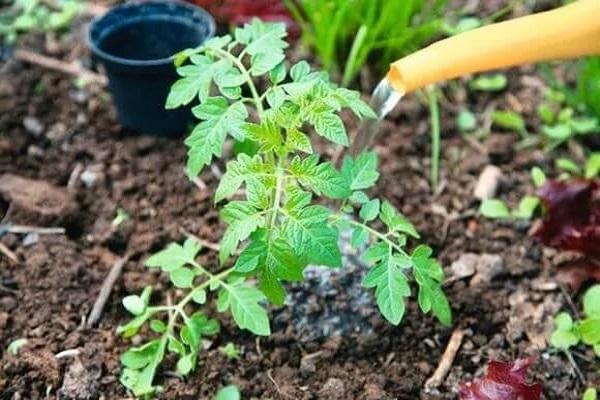

Foliar
The foliar application of fertilizing compositions is irrigation with yeast hydrate of the green mass of tomato bushes. The effectiveness of such feedings is significantly lower compared to the application of fertilizers under the root.
However, a couple of times during the season, the plantings should be irrigated with a yeast composition. This measure will saturate tomatoes with essential trace elements and become a good protection against pests and diseases.
To maximize the benefits of foliar application of the hydrate, it is necessary to enrich the yeast culture medium with sifted wood ash. Such treatment will prevent late blight.
Possible mistakes
- Too frequent feeding. Seeing the results of yeast fertilization can be tempting to feed your tomatoes with yeast too often. But you can't do that. The optimal amount of dressings is 3 for the whole season.
- Preparation of a solution in cold water. Yeast needs warm water or some other liquid to ferment.
- Fertilizing in cold weather. All of the above applies to this point as well. Yeast only works in warmth.
- Too concentrated solution for foliar dressing. When spraying tomatoes with yeast fertilizer, the concentration must be reduced. For this, the prepared solution is diluted at least 2 more times.
Recommendations
Experienced summer residents are advised to adhere to the rules:
- Before making yeast feed, it is required to water the seedlings with warm water. Yeast loves warmth. Watering unheated soil with yeast is a waste of effort and time with an ineffective result.
- Before feeding, the soil is pollinated with plant ash.
- Tomato tops are sprayed with yeast foliar feeding.
- Don't overdo it with fertilizers. They are fed a maximum of 4 times, so as not to provoke an imbalance in the soil and not to harm the tomato seedlings.
- If the weather is damp and cold, do not rush to feed yeast.
For proper cultivation of seedlings and obtaining a good harvest, it is useful to observe the condition of tomato bushes, the regularity of feeding with micro- and macronutrients, minerals and vitamins. Timely and correct fertilization of seedlings with yeast will increase productivity, as well as protect against diseases and harmful insects.
FAQ


Preparation of yeast fertilizer concentrate
Why do you need to feed plants with yeast?
Yeast is a source of many vitamins and minerals, as well as a growth stimulant. Their use as fertilizer improves plant health and stimulates growth. Yeast is also good for the soil.
How to properly prepare yeast fertilizer?
The yeast is diluted in warm water and left to ferment. So a concentrate is obtained, which is then diluted with water and the tomatoes are treated with the resulting composition.
What to do if the plant gets worse after feeding with yeast?
Feed the tomatoes with formulas with potassium and calcium and the next time reduce the concentration of yeast feeding.
How long can yeast feed be stored?
Fertilizer should be applied immediately after preparation. Every day it will lose its beneficial properties. If you do not have a lot of tomatoes, then guess the feeding schedule in such a way as to process not only tomatoes, but also other vegetables.
Why didn't the top dressing give any result?
First, you may simply not see the external result. This happens especially often when processing already mature plants. Secondly, you need to apply yeast fertilizer only in warm weather. When it's cold outside, this will not work.
What is in the composition of yeast that is beneficial to plants? Of course, a wide range of minerals.
Most of them contain potassium and phosphorus, slightly less calcium and iron, sodium and magnesium. Not devoid of yeast and vitamins. They are based on B vitamins, as well as C, K, PP and choline. You can continue to list the useful composition with proteins and carbohydrates.
A yeast-based fertilizer allows for good plant growth. Because it helps to form a strong root system. Plus, a favorable microflora is created in the soil. Which in turn inhibits the development of pathogenic microorganisms.
Under the action of the fungus, the composition of the soil is rebuilt from the composition of the yeast. It activates microorganisms that accelerate the processing of organic matter. Due to this, more nitrogen and potassium appear in it.
A yeast-based fertilizer allows for good plant growth. Because it helps to form a strong root system. Plus, a favorable microflora is created in the soil. Which in turn inhibits the development of pathogenic microorganisms.
Under the action of the fungus, the composition of the soil is rebuilt from the composition of the yeast. It activates microorganisms that accelerate the processing of organic matter. Due to this, more nitrogen and potassium appear in it.


If you feed the seedlings of peppers and tomatoes with yeast, then you can count on the following results:
- already mentioned - the rapid build-up of a strong root system;
- as a consequence of the first point - the acceleration of the growth of green mass, many shoots are formed on the main stem, which give an additional yield;
- tomato seedlings grow well, even in unfavorable conditions, for example, with insufficient lighting;
- tomatoes, peppers and cucumbers are less susceptible to disease.
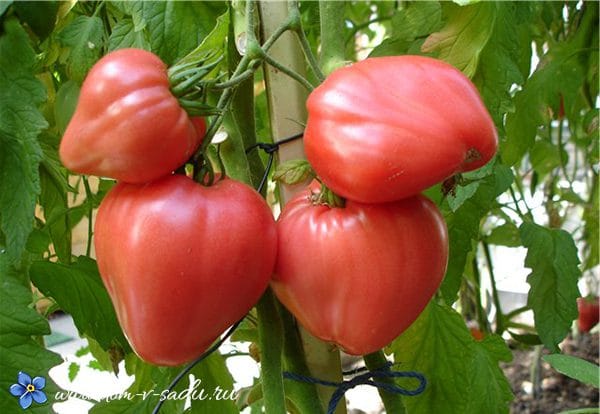

But it must be remembered that everything is good in moderation. Any fertilizer, even the best, should not be in excess. Because you can get the opposite effect and instead of increasing the yield, you can completely lose it. Experienced gardeners recommend doing yeast feeding no more than two or three times during the entire period of growth and ripening of the crop.
The first time the plants need to be fed while still in seedling state. Then, when the period of bud formation begins. In addition, the amount of yeast-based solution will require less than for adult plants. The second time feeding tomatoes should come in the fourth week after planting in a permanent place.
